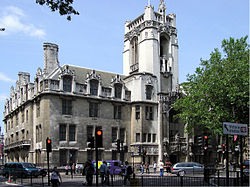
The United States is a common law country. This means that a primary source of our "law" is judicial decisions. The law is able to evolve and respond to a changing society. Judicial decisions are traditionally the most important source of new legal rules in a common law system, such as the development of new tort claims or standards of online privacy. The common law system orginated in England. As a former English colony it is understandable we would adopt this system although there are great differences between our systems.
Probably the most fundamental difference between English law and the law of the United States is the lack of a written constitution in England. Another really big difference, there is no codification of English statutes; no equivalent of the United States Code. English law is contained in about 3,000 acts of Parliament, thousands of statutory instruments (administrative regulations, rules and orders) and over 300,000 reported cases. Statutes passed by England's Parliament are not subject to review by the courts. English statutes cannot be declared "unconstitutional."
LLRX's Update to a Guide to the UK Legal System
For clarification, England and Britain are not the same thing or the same place:
England = England + Wales
Great Britain = England + Scotland
United Kingdom = Great Britain + Northern Ireland
Duke Law Library's English Law Research Guide
Law Library of Congress' Legal Research Guide: United Kingdom
LLRX's Update to a Guide to the UK Legal System
University of Essex, Albert Sloman Library Guide to English Law
University of London, School of Advanced Studies, Institute of Advanced Legal Studies' Library Research Guide: United Kingdom
Boston University Pappas Law Library's English Legal History Portal
The Proceedings of the Old Bailey, 1674-1913
With the exception of special jurisdiction courts that deal with immigration and employment, the United Kingdom does not have a united judicial system. There are three separate systems for England and Wales, Northern Ireland, and Scotland.

In October 2009 the United Kingdom established the Supreme Court as its highest court.* Previously the Appellate Committee of the House of Lords was the final court of appeal for civil and criminal cases from England and Wales.
Both divisions of the Court of Appeal exercise only appellate jurisdiction. The Crown Court and High Court of Justice have both original and appellate jurisdiction. They will exercise original jurisdiction in matters considered too serious to be heard in the Magistrates Courts or County Courts.
H.M. Courts and Tribunals Service
*The Supreme Court was established by Part 3 of the Constitutional Reform Act 2005 and started work on 1 October 2009.